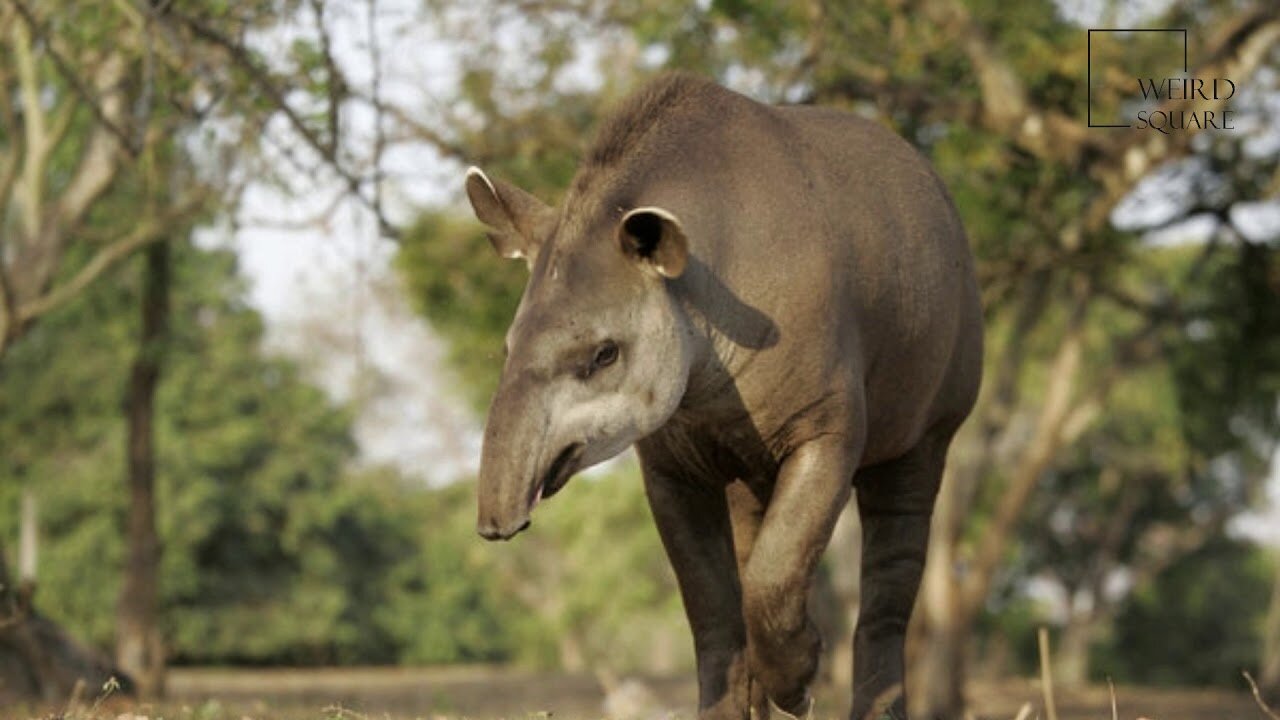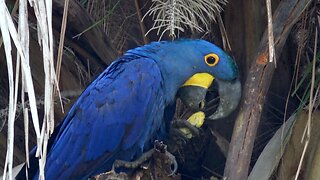Premium Only Content

Intersting facts about brazilian tapir by weird square
Description:
The Brazilian tapir, scientifically known as Tapirus terrestris, is a fascinating creature found in the dense forests and grasslands of South America. Also referred to as the South American tapir, it is the largest land mammal in the Amazon rainforest and plays a crucial role in maintaining the ecological balance of its habitat.
Interesting Facts:
Unique Appearance: Brazilian tapirs are distinguished by their large, barrel-shaped bodies covered in short, bristly fur that ranges in color from dark brown to reddish-brown. They have distinctive white markings on their face, throat, and ears, which provide camouflage in their natural environment.
Prehensile Snout: One of the most remarkable features of the Brazilian tapir is its elongated and flexible snout, which functions like a mini-trunk. This prehensile appendage helps them grasp and manipulate objects, as well as foraging for food in hard-to-reach places.
Solitary Creatures: Brazilian tapirs are primarily solitary animals, except during mating season or when a female is raising her young. They have large home ranges that they mark with scent glands to communicate with other tapirs.
Herbivorous Diet: These tapirs are herbivores, feeding on a variety of vegetation including leaves, fruits, and aquatic plants. Their diet plays a crucial role in seed dispersal, contributing to the regeneration of the forest.
Strong Swimmers: Brazilian tapirs are excellent swimmers and often seek refuge in water bodies when threatened by predators. They use their powerful bodies and webbed feet to navigate through rivers and streams with ease.
Endangered Status: Despite their importance to the ecosystem, Brazilian tapirs face numerous threats including habitat loss, hunting, and fragmentation of their habitat due to human activities. They are classified as vulnerable by the International Union for Conservation of Nature (IUCN), highlighting the need for conservation efforts to protect their populations.
Cultural Significance: In some indigenous cultures of South America, the Brazilian tapir holds spiritual significance and is considered a symbol of strength and resilience. It features prominently in folklore and traditional ceremonies.
Hashtags:
#BrazilianTapir #SouthAmericanTapir #RainforestMammal #WildlifeConservation #EcosystemProtection #EndangeredSpecies #AmazonBiodiversity #TapirFacts #WildlifeWednesday #BiodiversityHotspot
-
 5:40
5:40
Sugar Spun Run
22 hours ago $0.04 earnedNutella Brownies
171 -
 8:46
8:46
Faith Frontline
14 hours agoBill Maher STUNNED as Charlie Kirk Proves God Exists
816 -
 LIVE
LIVE
FyrBorne
8 hours ago🔴Warzone M&K Sniping: On the Hunt For The Next Fun Builds
11 watching -
 7:11
7:11
MudandMunitions
11 hours agoNY Legal, Still LETHAL! Colt M4 + Griffin Armament GPS3X Prism Sight! NIGHT SHOOT
273 -
 2:11
2:11
WildCreatures
2 days ago $0.32 earnedBrilliant Blue Hyacinth Macaw Eats Nuts With Impressive Dexterity
1.53K4 -
 29:45
29:45
DeVory Darkins
14 hours ago $4.35 earnedDemocrat Governor suffers EMBARRASSING LOSS to Trump as ICE takes Garcia into custody
5.01K51 -
 24:50
24:50
Bitcoin.com
14 hours agoEthereum hit an ATH this weekend | The Weekly Recap for Aug 25
265 -
 56:27
56:27
Actual Justice Warrior
14 hours agoAnti-White Celebrity DESTROYED On Jubilee
1.82K9 -
 19:44
19:44
itsSeanDaniel
1 day agoLiberal Karen INSTANTLY REGRETS Interrupting Putin's Right Hand Man
2088 -
 1:20:38
1:20:38
BlaireWhite
2 days agoThe Dark Truth About UFOs: Why The Government Is Lying
9.78K11